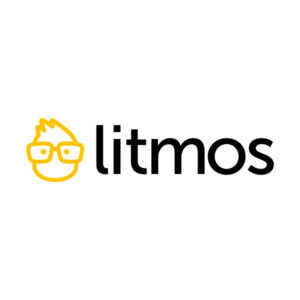External Training That Drives ROI: Steps For Creating Programs

Create, Deliver, and Optimize External Training
The learning needs of modern organizations extend beyond employee and customer training. If your company has partners, vendors, distributors, or resellers, Learning and Development (L&D) should be addressing the unique needs and knowledge gaps of those stakeholders with consistent, dynamic, and personalized external training. In this article, we’ll explore the six steps that L&D can take to create external training programs that yield real Returns On Investment (ROI).
The Evolution Of External Training
Until recently, traditional corporate training was a top-down affair that primarily focused on employees and partners. The information flowed one way: directly to the learner (often an employee, customer, or partner). As supply chains and business systems have evolved to become more complex than ever, L&D has had to adjust its scope to meet the growing training needs of not only employees, but the entire extended enterprise ecosystem of vendors, distributors, and others.
The shift toward external training has also necessitated a more dynamic approach to knowledge management. L&D can no longer just send a training manual to a partner and call it a day. Knowledge exchange has become a two-way street, and an operational necessity for modern businesses.
The Benefits And Challenges Of External Training
Competitive organizations understand the positive impact that a strategic approach to external training can have, by proactively managing, curating, delivering, and improving product, industry, and company training resources for everyone in the enterprise. A better-informed partner or customer will have a better experience with a company’s product or service and may begin to view that company as a trusted source for industry or product knowledge.
When building an external training strategy, determining which aspects of organizational learning should be shared can be challenging. Many organizations choose to only share product or service information, but more robust programs choose to share innovative or effective business practices from their partners across the enterprise, or to offer soft skills training opportunities to improve outcomes for vendors, partners, and customers. Opting for Learning Management Systems that offer prebuilt courses on such topics can help L&D launch such external trainings easily, without the need to build custom courses.
Including such skills-based trainings to external stakeholders who may not have robust in-house learning resources, can also foster stronger business relationships and reduce their reliance on your organization’s customer experience (CX) team. This frees up time and resources for your CX and sales team members to focus on high-level strategy or high-value business opportunities.
Despite the obvious benefits of holistic knowledge sharing, not every customer, vendor, or partner will be open to this approach. If a partner has their own robust learning program, for example, it may view your external trainings as an intrusion. But getting buy-in for a consistent cross-enterprise learning strategy is worth the effort, as external training can improve your company’s offerings and the overall customer experience–which ultimately leads to less churn and more revenue opportunities.
Building A Learning Program For The Extended Enterprise
Training every area of your business is no easy feat. A robust L&D strategy for enterprise-wide training must address the needs and knowledge gaps of partners, vendors, and other stakeholders across the organization, while also soliciting feedback from every learner to continuously improve external training. Follow these six tips to help you create, deliver, and optimize your external training program:
1. Identify your Target External Learners
Which stakeholders are members of your enterprise? Knowing who your partners, vendors, distributors, resellers, and other key stakeholders are, will help executive leadership understand their value, and the potential ROI of training them.
2. Assess Available Learning Materials
Before creating net-new external training, L&D should be identifying which specific skills their external teams may already be learning, and whether their knowledge has been documented. What courses exist in your partners’ libraries? How do they currently train their teams? These questions should be addressed internally and in conjunction with the other external stakeholders.
3. Identify Required Training
After identifying which knowledge and skills your enterprise already has, you will need to take stock of what your external training program will need. L&D should be asking: “What valuable information is needed, but doesn’t exist yet?” Again, this assessment should be conducted both internally and in collaboration with external stakeholders.
4. Delineate Between Shareable And Non-Shareable Knowledge
For many businesses, there is certain information that either doesn’t need to be shared, or can’t be shared. When building an external training program, be sure to protect any proprietary knowledge that your organization wouldn’t want to share widely. (The Toyota mantra was “share intensively, but selectively.”)
5. Build Collaboration Into Your External Training Strategy
It’s important to gather feedback from external stakeholders before, during, and after the training process. As you’ve finished step 4 and asked “what needs to be shared?,” figure out how your business and its partners, distributors, vendors, or resellers want to share it. What enterprise learning management solutions or platforms can be used? How will permissions be handled? How will schedules and messaging be coordinated? You’ll also need to pull in executive leadership to ensure that the program yields savings and revenue by asking “Who pays for what?”
6. Gather Feedback And Iterate
The work isn’t over when external training has been built and implemented. To continue extracting the most value from external training, L&D will need to follow up with external learners and stakeholders to gather feedback on the training itself, as well as any customer feedback on your product or service.
Building frequent feedback and improvement cycles into external training is at the core of this modern strategy. Doing so ensures that those learners outside of your employee base are always aligned with your company’s vision and goals. Integrating your external training platform into existing business systems such as CRMs, HRIS, and sales platform software is critical for gaining actionable insights on the impact of external training across the enterprise.
Source link





